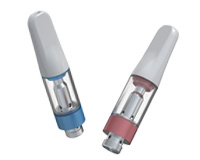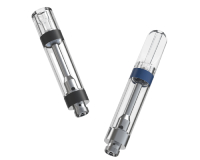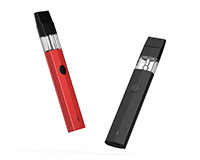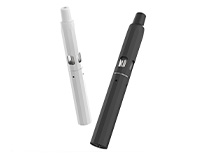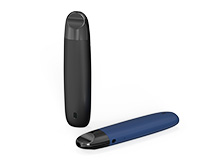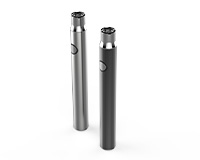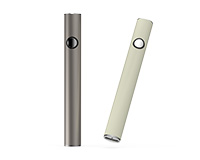Nicotine Vape vs. Marijuana Vape
In recent years, vaping has emerged as a popular alternative to traditional smoking and has expanded into various substances, most notably nicotine and cannabis. Both nicotine vape and marijuana vape are used by millions of people around the world, but they serve different purposes and come with distinct effects, risks, and benefits. In this blog post, we'll delve into a comparative analysis of nicotine vape and marijuana vape, examining their components, effects on health, and cultural implications.
Understanding Nicotine and Marijuana Vape
Nicotine Vape
Nicotine vape, commonly referred to as e-cigarette or vape pen, delivers nicotine through an aerosol that is inhaled. This device heats a liquid solution, known as e-liquid or vape juice, which typically contains nicotine, flavorings, and a base of propylene glycol and/or vegetable glycerin. Nicotine, a stimulant found in tobacco plants, is the addictive substance that vapers are seeking. The primary appeal of nicotine vapes lies in their perceived safety compared to traditional cigarettes and their ability to help smokers reduce or quit smoking.
Marijuana Vape
Marijuana vape, on the other hand, is designed to vaporize cannabinoids, such as THC (tetrahydrocannabinol) and CBD (cannabidiol), found in marijuana plants. It heats marijuana concentrates or oils to a temperature that releases the active compounds without burning the plant material. The result is a vapor that is inhaled, offering users a different experience compared to smoking marijuana. Marijuana vapes are used for both recreational and medicinal purposes, with effects that vary depending on the strain and cannabinoid profile.
a greatly improve your overall experience.
Health Implications
Nicotine Vape
While nicotine vapes is often marketed as a safer alternative to smoking, the health implications are still significant. Research indicates that vaping can have adverse effects on cardiovascular health, lung function, and overall respiratory health. The long-term effects of inhaling vaporized nicotine and other chemicals are not fully understood, but studies suggest potential risks, including nicotine addiction, increased blood pressure, and respiratory issues. Additionally, the presence of flavoring agents and other additives in vape juices can contribute to health problems, as some of these chemicals may produce harmful byproducts when heated.
Marijuana Vape
Marijuana Vape is generally considered to have a lower risk profile compared to smoking marijuana, primarily because it avoids the harmful byproducts of combustion. Vaporizing marijuana may reduce the exposure to tar and other toxins associated with smoking. However, marijuana vape is not without health concerns. The quality and safety of marijuana vape products can vary widely, and some inferior devices or concentrates may contain harmful additives or contaminants.
User Experience
Nicotine Vape
Nicotine vape is designed to mimic the experience of smoking, providing users with a sensation of inhaling a vapor that closely resembles smoke. The ability to choose from a wide range of flavors adds to the appeal, catering to individual preferences and enhancing the overall experience. For those trying to quit smoking, nicotine vape offers a controlled way to manage nicotine intake, gradually reducing dependence. The convenience and portability of vape pen make them an attractive option for many users.
Marijuana Vape
Marijuana vape offers a different experience, focusing on delivering the effects of cannabinoids rather than simulating smoking. The vaporization process allows for a more efficient and precise delivery of cannabinoids, which can lead to quicker onset and more controlled effects. The ability to choose different strains and formulations provides users with a tailored experience, whether for relaxation, pain relief, or recreational enjoyment. Marijuana vape can also be more discreet compared to smoking, which is advantageous for users who prefer a low-profile consumption method.
Cultural and Social Aspects
Nicotine Vape
The rise of nicotine vape has been associated with a shift in smoking culture, particularly among younger demographics. The trend towards vaping has been linked to both the allure of flavored products and the perception of reduced harm compared to traditional smoking. However, concerns about the increasing popularity of vaping among teenagers and non-smokers have led to debates about regulation and public health. In response, many countries have introduced stricter regulations on the sale and marketing of nicotine vape to address these concerns.
Marijuana Vape
Marijuana Vape has gained traction as part of the broader trend toward the legalization and normalization of cannabis use. As more regions legalize marijuana for medical and recreational purposes, marijuana vape has become a popular choice for consumers seeking a more refined and controlled method of consumption. The cultural acceptance of marijuana vape often reflects the evolving attitudes toward cannabis use and its integration into mainstream society.
Conclusion
Both nicotine and marijuana vape offer distinct advantages and disadvantages, reflecting their different purposes and target audiences. Nicotine vape is often seen as a harm reduction tool for smokers, though their long-term health effects remain a concern. marijuana vape provides a more controlled and potentially less harmful alternative to vaping marijuana, but users should be aware of the variability in product quality and potential health risks.
As with any substance, informed decision-making and awareness of potential risks are crucial. Whether considering vaping as a smoking cessation aid or as a method of consuming marijuana, understanding the implications and making choices based on reliable information can help ensure a safer and more informed experience.




